AIRBUS Bundle
Who Really Owns Airbus?
Unraveling the ownership of Airbus is key to understanding the aerospace giant's global influence. Knowing who owns Airbus is not just about identifying shareholders; it's about grasping the forces that shape its strategic decisions, from product development to market expansion. This exploration is vital for anyone seeking to understand the dynamics of the global aerospace industry and the AIRBUS SWOT Analysis.
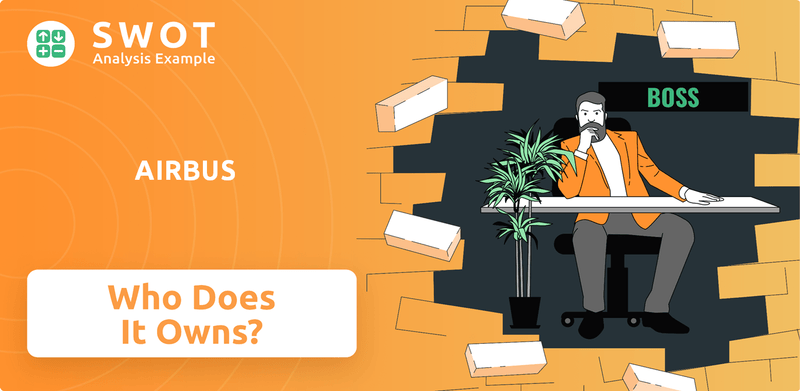
The evolution of Airbus's ownership, from its consortium beginnings to its current publicly traded status, offers a fascinating case study in corporate governance and international collaboration. Understanding the Airbus shareholders and the Airbus parent company is crucial for investors and analysts alike. This article will examine the Airbus company structure, providing insights into who controls Airbus decisions and the impact of its major stakeholders on its future trajectory.
Who Founded AIRBUS?
The genesis of the company, unlike many corporations, wasn't the brainchild of a single founder but a collaborative effort. Initially, it was a consortium, a strategic alliance among several European nations. This arrangement aimed to create a formidable competitor in the commercial aircraft market, challenging the dominance of American aerospace giants.
The primary 'founders' were the national aerospace companies of France, Germany, and the UK, later joined by Spain. These entities pooled resources, expertise, and market access to establish a competitive foothold. This collaborative approach was crucial in its early stages, setting the stage for its future success.
The initial ownership structure was complex, reflecting the multi-national nature of the project. The early equity split evolved over time. The initial partners included Aérospatiale (France), Deutsche Airbus (Germany), Hawker Siddeley (UK), and later Construcciones Aeronáuticas SA (CASA) (Spain). This structure was designed to share the risks and rewards of developing and marketing commercial aircraft.
The primary partners were the national aerospace companies of France, Germany, and the UK. Spain joined later. These companies formed the core of the initial consortium.
France and Germany held significant shares. The UK and Spain had smaller, but substantial, percentages. This reflected the initial investment and commitment from each nation.
The GIE structure meant joint ownership and management. Aérospatiale and Deutsche Airbus each held 37.5%, Hawker Siddeley held 20%, and Fokker held 5%. This structure facilitated collaboration.
The venture was a state-backed industrial collaboration, not a traditional startup. Early agreements focused on workshare, financial contributions, and profit-sharing.
The transition involved complex negotiations and buyouts. This led to the formation of EADS in 2000, aiming for a more streamlined operational model.
The multi-national ownership aimed to pool resources and expertise. This was to create a robust European competitor to American aerospace giants.
The evolution of the company's ownership structure reflects a strategic shift towards greater integration and efficiency. The initial consortium model, while successful in its own right, paved the way for a more streamlined corporate structure. The formation of EADS (European Aeronautic Defence and Space Company) in 2000, later renamed to the current name, marked a significant milestone in this evolution. This transition involved complex negotiations and buyouts, consolidating the ownership and management of the company. The current ownership structure, with its publicly traded shares and significant stakes held by institutional investors, is a far cry from the initial consortium. Understanding the Growth Strategy of AIRBUS provides further insight into the company's evolution and its approach to maintaining its competitive edge.
The initial ownership of the company was a collaborative effort among European nations. This structure evolved over time, leading to the current corporate structure. The company's ownership has transformed from a consortium to a publicly traded entity.
- The initial partners were primarily France, Germany, the UK, and Spain.
- The early ownership structure was a complex arrangement reflecting the collaborative efforts.
- The transition to a more integrated corporate structure involved complex negotiations.
- The current ownership includes a mix of public and institutional investors.
AIRBUS SWOT Analysis
- Complete SWOT Breakdown
- Fully Customizable
- Editable in Excel & Word
- Professional Formatting
- Investor-Ready Format
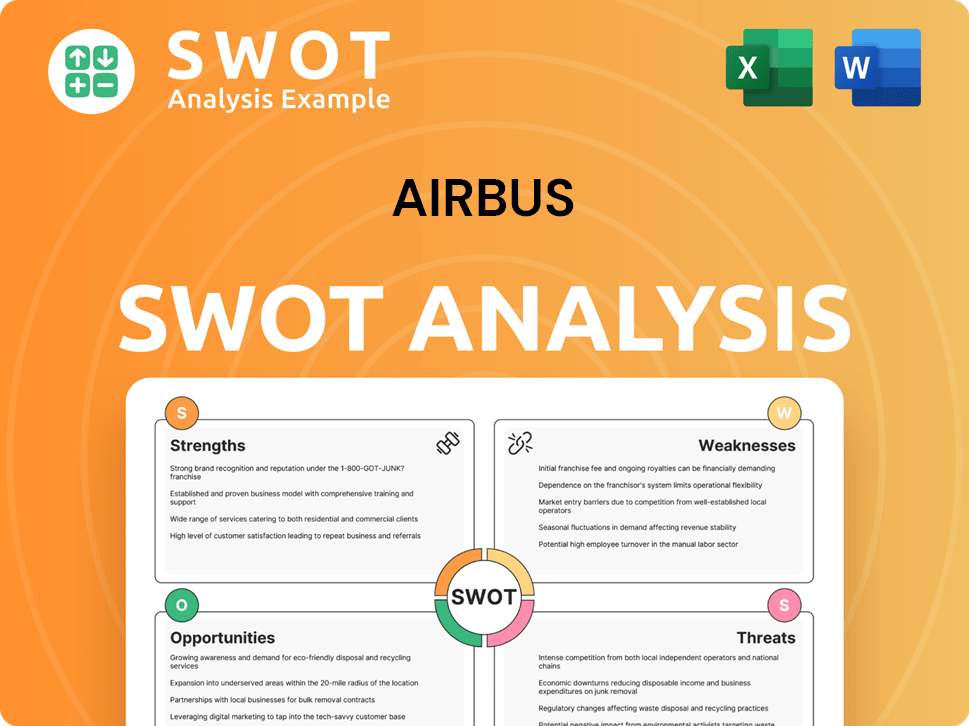
How Has AIRBUS’s Ownership Changed Over Time?
The evolution of Airbus's ownership has been a dynamic process, shifting from a multinational consortium to a publicly traded entity. A pivotal moment was the formation of the European Aeronautic Defence and Space Company (EADS) in July 2000, which consolidated key national interests from Germany, France, and Spain. This consolidation was a strategic move to streamline operations and enhance competitiveness in the global aerospace market. The initial public offering (IPO) of EADS in July 2000 marked a significant transition towards public ownership, enabling broader investment opportunities.
A key change in the ownership structure occurred in 2006 when BAE Systems sold its 20% stake in Airbus to EADS, making Airbus a wholly-owned subsidiary of EADS. This consolidation simplified the corporate structure and further centralized decision-making. Currently, Airbus SE's ownership is widely dispersed among institutional investors and public shareholders, reflecting a mature market presence and global investor confidence. These changes have significantly impacted the company's strategic direction and governance, allowing for more centralized decision-making and greater financial transparency.
| Event | Date | Impact |
|---|---|---|
| Formation of EADS | July 2000 | Consolidated national interests into a single entity. |
| Initial Public Offering (IPO) of EADS | July 2000 | Shifted towards public ownership, enabling broader investment. |
| BAE Systems sold its stake | 2006 | Made Airbus a fully-owned subsidiary of EADS. |
As of early 2024, the major shareholders of Airbus include large institutional investors, such as BlackRock Inc. and The Vanguard Group, which typically hold significant stakes, although these are often passive investments. Government influence persists through significant indirect stakes held by state-owned entities. For instance, the French government, through SOGEPA, and the German government, through KfW, have historically held significant stakes, often around 11% each, maintaining a degree of strategic influence. These governmental stakes are often viewed as safeguarding national interests in the aerospace and defense sectors. These governmental holdings often ensure a balance between commercial objectives and national strategic interests. The current ownership structure reflects a balance between private and public interests, ensuring both financial stability and strategic alignment.
Airbus is a publicly traded company with a diverse shareholder base, including institutional and public investors. The ownership structure has evolved significantly, moving from a consortium to a fully-owned subsidiary and then to a publicly listed company. The major shareholders include institutional investors and governmental entities, ensuring strategic balance.
- Institutional investors hold significant stakes.
- Governmental entities maintain strategic influence.
- No single entity holds a majority stake.
- The company structure supports both commercial and strategic interests.
AIRBUS PESTLE Analysis
- Covers All 6 PESTLE Categories
- No Research Needed – Save Hours of Work
- Built by Experts, Trusted by Consultants
- Instant Download, Ready to Use
- 100% Editable, Fully Customizable
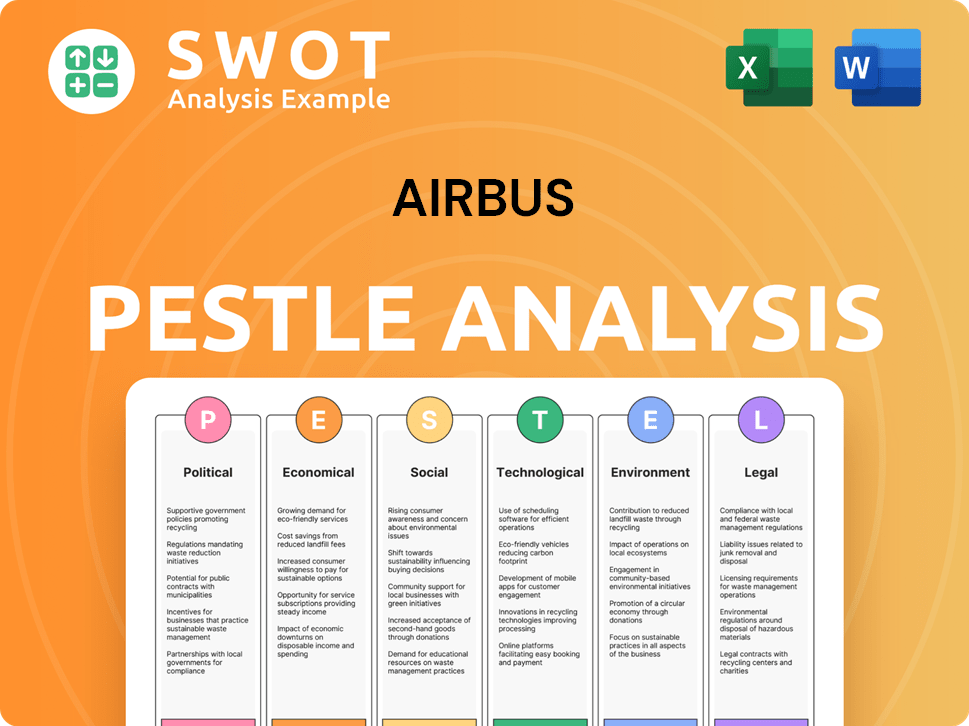
Who Sits on AIRBUS’s Board?
The Board of Directors of Airbus SE is pivotal in governing the company, balancing the interests of its diverse shareholder base, including major institutional investors and governmental entities. As of early 2024, the board includes a mix of independent directors and representatives linked to significant shareholders. Independent directors often come from major European industries and finance backgrounds. Directors may have ties to the French, German, or Spanish governments, reflecting their strategic stakes in the company. Understanding the Revenue Streams & Business Model of AIRBUS can provide additional context to the company's operational structure.
The voting structure of Airbus SE generally follows a one-share-one-vote principle for its ordinary shares. However, the historical involvement of the French, German, and Spanish governments has been maintained through specific agreements. These agreements are designed to maintain a degree of national influence over the company's strategic direction. While 'golden shares' have largely been phased out, the significant minority stakes held by these governments still confer substantial influence. This influence is often exercised through board representation and their ability to shape key strategic decisions, especially those concerning national security or defense contracts.
| Shareholder | Approximate Ownership (Early 2024) | Notes |
|---|---|---|
| French Government (SOGEPA) | ~11% | Influential in strategic decisions. |
| German Government (KfW) | ~11.1% | Significant influence through board representation. |
| Spanish Government (SEPI) | ~4% | Plays a role in strategic direction. |
The ownership of Airbus is complex, involving multiple stakeholders. Key shareholders include governmental entities and institutional investors. The company structure balances commercial objectives with national interests.
- Airbus is a publicly traded company, but with significant government influence.
- The French, German, and Spanish governments hold substantial stakes.
- Decisions often involve negotiations among governmental stakeholders.
- The governance structure aims for stability and strategic direction.
AIRBUS Business Model Canvas
- Complete 9-Block Business Model Canvas
- Effortlessly Communicate Your Business Strategy
- Investor-Ready BMC Format
- 100% Editable and Customizable
- Clear and Structured Layout
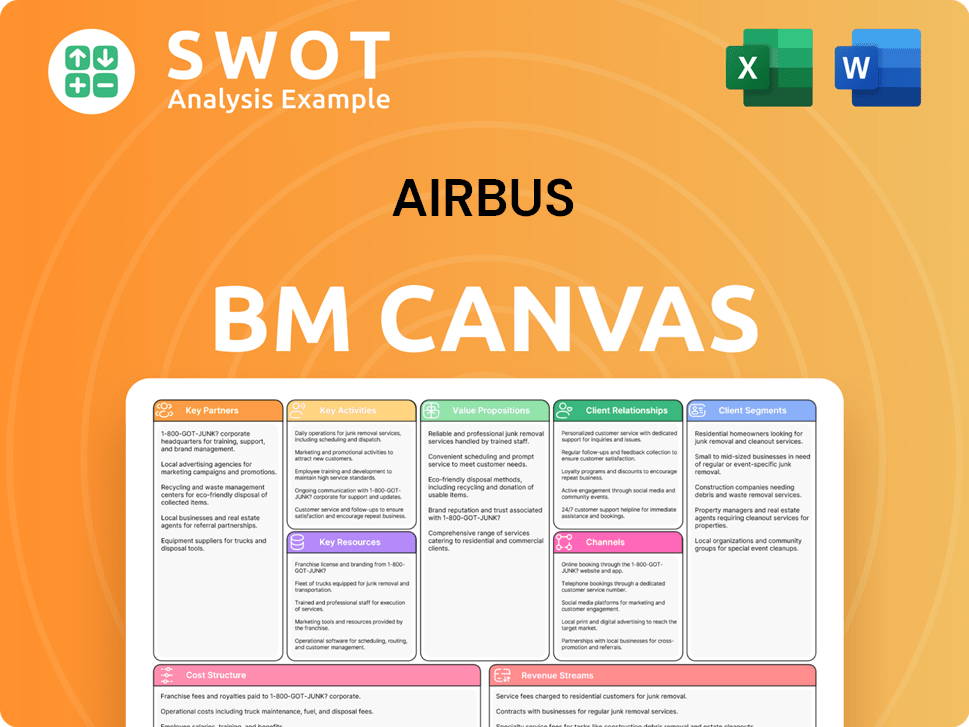
What Recent Changes Have Shaped AIRBUS’s Ownership Landscape?
Over the past few years (2021-2024), the Airbus ownership landscape has seen ongoing trends rather than dramatic shifts. The company continues to be shaped by its publicly traded status and the presence of strategic governmental stakes. There have been no major changes such as a complete privatization or a significant founder departure, given the company's structure.
One notable aspect is the continuation of share buyback programs. For example, Airbus completed a share buyback program of up to €1 billion in 2023, following a similar program in 2022. These actions reflect the company's financial health and its outlook. Furthermore, there's a steady increase in institutional ownership, with large asset managers and index funds holding substantial stakes. This can lead to a more dispersed ownership base, but also concentrates voting power among a few major investors.
| Year | Share Buyback Program (Up to) | Details |
|---|---|---|
| 2022 | €1 billion | Reflects strong financial performance |
| 2023 | €1 billion | Enhances shareholder value |
| 2024 | Ongoing | Market dynamics and capital allocation strategies |
The current ownership structure, with a significant free float and strategic stakes held by the French, German, and Spanish governments, appears stable. The focus remains on operational efficiency, technological innovation, and navigating the global aerospace market. Any future ownership changes are likely to be incremental, reflecting market dynamics and capital allocation strategies rather than fundamental shifts in control. The company's commitment to shareholder value is evident through these buyback programs and its strategic approach to capital management.
The Airbus stock
has shown resilience. Investors interested in Airbus stock
should monitor financial reports. The stock's performance is influenced by market conditions and company performance. This makes it crucial for potential investors to stay informed.
Institutional investors hold a significant portion of Airbus shares
. This trend is common in the aerospace sector. Large asset managers and index funds play a key role. This influences the dynamics of Airbus shareholders
.
Share buyback programs increase the proportional ownership. These programs are aimed at enhancing shareholder value. They reflect the company's confidence in its future. This is a key aspect for understanding Who owns Airbus
.
The French, German, and Spanish governments hold strategic stakes. This influences the company's strategic decisions. It ensures a balance between public and private interests. This is part of the Airbus ownership structure
.
AIRBUS Porter's Five Forces Analysis
- Covers All 5 Competitive Forces in Detail
- Structured for Consultants, Students, and Founders
- 100% Editable in Microsoft Word & Excel
- Instant Digital Download – Use Immediately
- Compatible with Mac & PC – Fully Unlocked
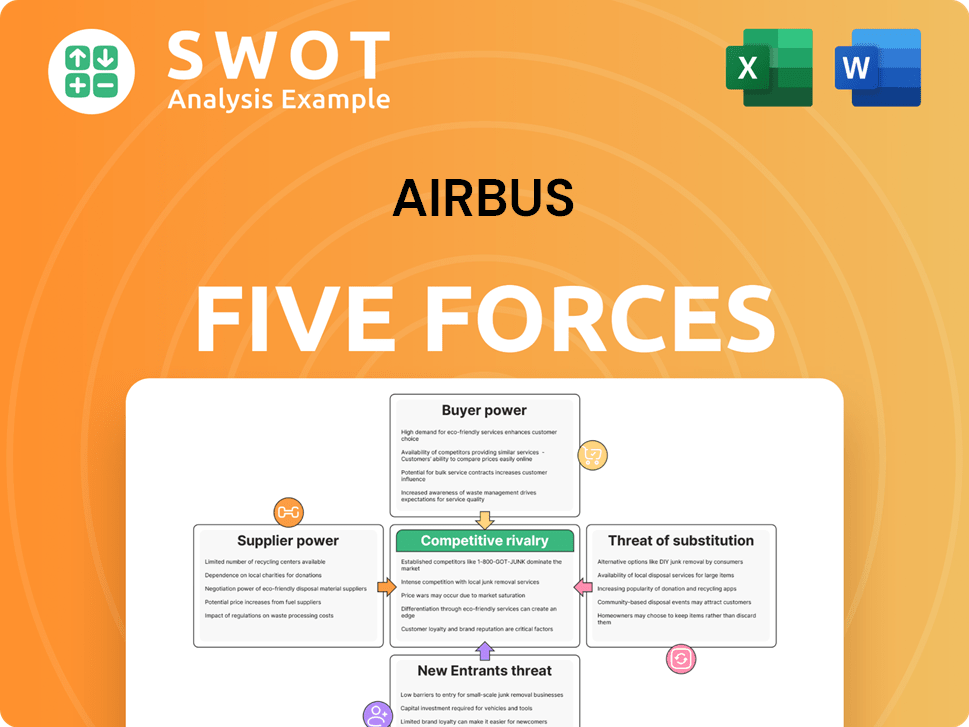
Related Blogs
- What are Mission Vision & Core Values of AIRBUS Company?
- What is Competitive Landscape of AIRBUS Company?
- What is Growth Strategy and Future Prospects of AIRBUS Company?
- How Does AIRBUS Company Work?
- What is Sales and Marketing Strategy of AIRBUS Company?
- What is Brief History of AIRBUS Company?
- What is Customer Demographics and Target Market of AIRBUS Company?
Disclaimer
All information, articles, and product details provided on this website are for general informational and educational purposes only. We do not claim any ownership over, nor do we intend to infringe upon, any trademarks, copyrights, logos, brand names, or other intellectual property mentioned or depicted on this site. Such intellectual property remains the property of its respective owners, and any references here are made solely for identification or informational purposes, without implying any affiliation, endorsement, or partnership.
We make no representations or warranties, express or implied, regarding the accuracy, completeness, or suitability of any content or products presented. Nothing on this website should be construed as legal, tax, investment, financial, medical, or other professional advice. In addition, no part of this site—including articles or product references—constitutes a solicitation, recommendation, endorsement, advertisement, or offer to buy or sell any securities, franchises, or other financial instruments, particularly in jurisdictions where such activity would be unlawful.
All content is of a general nature and may not address the specific circumstances of any individual or entity. It is not a substitute for professional advice or services. Any actions you take based on the information provided here are strictly at your own risk. You accept full responsibility for any decisions or outcomes arising from your use of this website and agree to release us from any liability in connection with your use of, or reliance upon, the content or products found herein.